Reading 590’s Pay Increases #
This webpage references Local 590’s 2021-2026 Collective Bargaining Agreement section on Rates of Pay, pages 8-10.
590’s contract builds in two kinds of pay increases: across-the-board (ATB) raises that are guaranteed for every member, and step increases on top of those ATB increases that reward staff members for their years of service. 590 has step increases at two, four, six, twelve, and eighteen years of service.
Let’s use an example to see how this works. We’ll track a hypothetical Library Assistant I who began working at Penn in January 2021. Keep an eye out for those longevity increases!
According to the July 2021 table, this Library Assistant I, at 0.5 years of service, would be making $52,081.70.
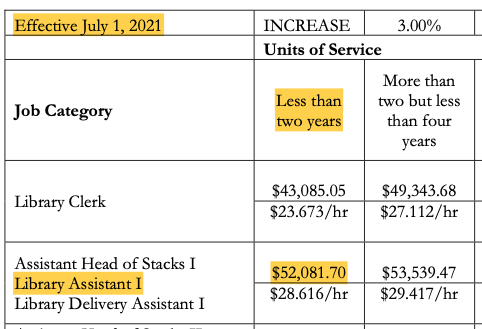
The following year, July 2022, the Library Assistant I is now at 1.5 years of service, and receives that year’s across-the-board pay raise of 3%. They are now making $53,644.15.
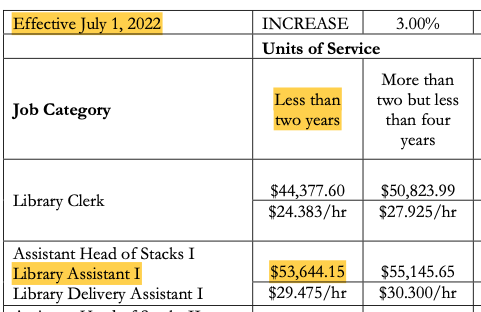
The next year, July 2023, the Library Assistant I has crossed the threshold and is now at 2.5 years of service. They get a longevity increase. While the across-the-board pay increase in 2023 is 2.9%, this library assistant is now making $56,744.88. That’s a 5.78% increase!
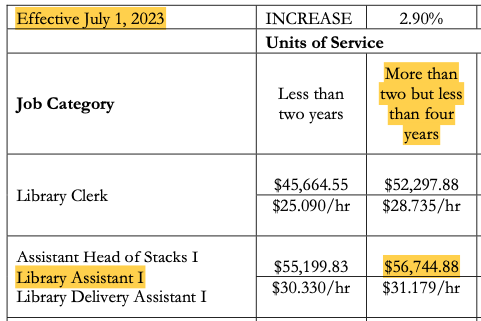
The next near, July 2024, the Library Assistant I is at 3.5 years of service – more than two but less than four years. They get that year’s across-the-board increase of 2.75% and their salary rises to $58,305.36.
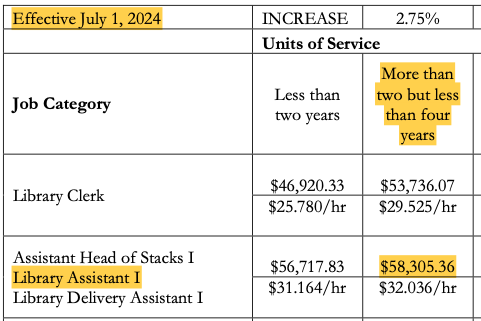
In July 2025, the final year of this contract, the Library Assistant I has now reached 4.5 years of service and they get another step-increase. The across-the-board increase that year is 2.75%, but this staff member will instead be getting a new salary of $61,580.58, which is a 5.62% increase.
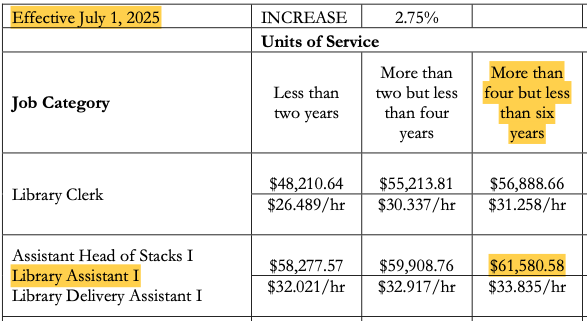
Now that you understand how ATB increases combine with longevity increases, let’s look at a larger table. This one imagines a sample from all four major job domains in the 590 contract, each domain with three staff at different points in their career: early, mid, and later career. You can download this table as an Excel document and look at the formulas for each cell, matching them to the salaries in the 590 CBA tables.
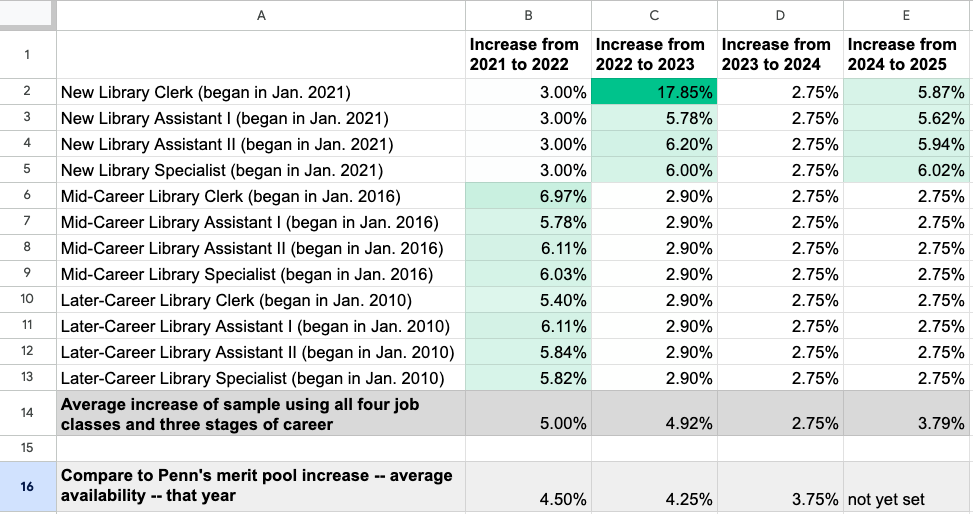
On any given year, the average pay increase for this group of people is well-above the ATB increase – that’s because longevity increases are taken into account. In fact, these rates usually outpace Penn’s merit increase pool average.
We encourage you to come up with your own scenarios and do the calculations. All of this information is transparently and publicly laid out in the contract. The formula to calculate a rate increase is:
(New salary - Old salary) / Old salary
For example: (61,580.58 - 58,305.36) / 58,305.36 = 0.0562 (rounding the last decimal up). Multiply that by 100 to get a percentage: 5.62%.
Happy calculating!